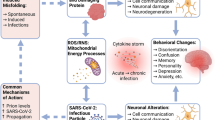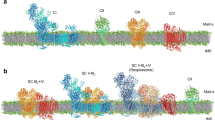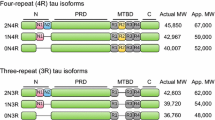Abstract
Amyotrophic lateral sclerosis is a fatal, devastating, rapidly progressive, adult onset neurodegenerative disease, which is involved in the formation of proteinaceous virulent aggregates from superoxide dismutase 1 (SOD1) as a Cu/Zn metalloenzyme in motor neurons. However, the particular mechanism of mutant SOD1 toxicity has remained elusive. Here, we use complementary biochemical and biophysical methods to investigate thermodynamic parameters of wild-type (WT), E100K and D125H mutants in both metal-free (apo) and metalized (holo) forms of SOD1, to find out if there is any relationship between the structural/thermodynamic stability with aggregation propensity in apo and holo forms of WT/mutant SOD1 variants. Also, in this study, we compared the aggregation propensity of WT SOD1 and the mutants (E100K, D125H) under reducing conditions; the aggregation process and protein surface hydrophobicity were monitored by Thioflavin T (ThT) and ANS fluorescence, respectively. To determine molecular sizes, and intramolecular secondary structures, dynamic light scattering (DLS) and X-ray diffraction analyses were also applied, respectively. In addition to thermodynamic parameters measurements of both apo- and holo-proteins, melting temperature (Tm) of apo proteins was assessed. Furthermore, for comparative evaluation of toxicity of SOD1 aggregates, LDH cytotoxicity as well as hemolysis assays were performed. The hydrodynamic diameters of all SOD1 variants were the same. ThT/ANS results, however, confirmed that DTT-mediated reduction in intramolecular S–S bonds induces gross conformational changes followed by the protein assembly. Thermodynamic studies showed that neither metal deficiency/mutation nor intramolecular S–S reduction, alone, can significantly reduce stability of SOD1 proteins, and demetallation (reduced stability) and intramolecular S–S reduction, together, are required for initiation of SOD1 misfolding/aggregation. CR binding, CD and XRD results, also together, confirmed the non-amyloid character of relatively toxic SOD1 aggregates. It appears that reduced thermodynamic stability as prerequisite for aggregation of SOD1 mutants must be accompanied by intramolecular disulfides reduction.











Similar content being viewed by others
References
M. Chattopadhyay, J.S. Valentine, Aggregation of copper-zinc superoxide dismutase in familial and sporadic ALS. Antioxid. Redox Signal. 11(7), 1603–1614 (2009)
O. Abel, A. Shatunov, A.R. Jones, P.M. Andersen, J.F. Powell, A. Al-Chalabi, Development of a smartphone app for a genetics website: the amyotrophic lateral sclerosis online genetics database (ALSoD). JMIR mHealth uHealth 1(2), e18 (2013)
M.E. Gurney, H. Pu, A.Y. Chiu, M.C. Dal Canto, C.Y. Polchow, D.D. Alexander et al., Motor neuron degeneration in mice that express a human Cu, Zn superoxide dismutase mutation. Science 264(5166), 1772–1775 (1994)
P.C. Wong, C.A. Pardo, D.R. Borchelt, M.K. Lee, N.G. Copeland, N.A. Jenkins et al., An adverse property of a familial ALS-linked SOD1 mutation causes motor neuron disease characterized by vacuolar degeneration of mitochondria. Neuron 14(6), 1105–1116 (1995)
D.R. Borchelt, M.K. Lee, H.S. Slunt, M. Guarnieri, Z.S. Xu, P.C. Wong et al., Superoxide dismutase 1 with mutations linked to familial amyotrophic lateral sclerosis possesses significant activity. Proc. Natl. Acad. Sci. USA 91(17), 8292–8296 (1994)
A. Tiwari, L.J. Hayward, Familial amyotrophic lateral sclerosis mutants of copper/zinc superoxide dismutase are susceptible to disulfide reduction. J. Biol. Chem. 278(8), 5984–5992 (2003)
Y. Furukawa, K. Kaneko, K. Yamanaka, N. Nukina, Mutation-dependent polymorphism of Cu, Zn-superoxide dismutase aggregates in the familial form of amyotrophic lateral sclerosis. J. Biol. Chem. 285(29), 22221–22231 (2010)
P.B. Stathopulos, J.A.O. Rumfeldt, G.A. Scholz, R.A. Irani, H.E. Frey, R.A. Hallewell et al., Cu/Zn superoxide dismutase mutants associated with amyotrophic lateral sclerosis show enhanced formation of aggregates in vitro. Proc Natl Acad Sci USA 100(12), 7021–7026 (2003)
I. Choi, Y.I. Yang, H.D. Song, J.S. Lee, T. Kang, J.-J. Sung et al., Lipid molecules induce the cytotoxic aggregation of Cu/Zn superoxide dismutase with structurally disordered regions. Biochim. Biophys. Acta 1812(1), 41–48 (2011)
L. Banci, I. Bertini, A. Durazo, S. Girotto, E.B. Gralla, M. Martinelli et al., Metal-free superoxide dismutase forms soluble oligomers under physiological conditions: a possible general mechanism for familial ALS. Proc Natl Acad Sci USA 104(27), 11263–11267 (2007)
Y.-M. Hwang, P.B. Stathopulos, K. Dimmick, H. Yang, H.R. Badiei, M.S. Tong et al., Nonamyloid aggregates arising from mature copper/zinc superoxide dismutases resemble those observed in amyotrophic lateral sclerosis. J. Biol. Chem. 285(53), 41701–41711 (2010)
M. Chattopadhyay, A. Durazo, S.H. Sohn, C.D. Strong, E.B. Gralla, J.P. Whitelegge et al., Initiation and elongation in fibrillation of ALS-linked superoxide dismutase. Proc. Natl. Acad. Sci. USA 105(48), 18663–18668 (2008)
S. Kiese, A. Papppenberger, W. Friess, H.-C. Mahler, Shaken, not stirred: mechanical stress testing of an IgG1 antibody. J. Pharm. Sci. 97(10), 4347–4366 (2008)
K. Yamamoto, H. Yagi, D. Ozawa, K. Sasahara, H. Naiki, Y. Goto, Thiol compounds inhibit the formation of amyloid fibrils by beta 2-microglobulin at neutral pH. J. Mol. Biol. 376(1), 258–268 (2008)
R.W. Strange, S. Antonyuk, M.A. Hough, P.A. Doucette, J.A. Rodriguez, P.J. Hart et al., The Structure of Holo and Metal-deficient Wild-type Human Cu, Zn Superoxide Dismutase and its Relevance to Familial Amyotrophic Lateral Sclerosis. J. Mol. Biol. 2836(03), 877–891 (2003)
D.R. Rosen, T. Siddique, D. Patterson, D.A. Figlewicz, P. Sapp, A. Hentati et al., Mutations in Cu/Zn superoxide dismutase gene are associated with familial amyotrophic lateral sclerosis. Nature 362(6415), 59–62 (1993)
Z.A. Oztug Durer, J.A. Cohlberg, P. Dinh, S. Padua, K. Ehrenclou, S. Downes et al., Loss of metal ions, disulfide reduction and mutations related to familial ALS promote formation of amyloid-like aggregates from superoxide dismutase. PLoS ONE 4(3), e5004 (2009)
E.D. Getzoff, J.A. Tainer, P.K. Weiner, P.A. Kollman, J.S. Richardson, D.C. Richardson, Electrostatic recognition between superoxide and copper, zinc superoxide dismutase. Nature 306(5940), 287–290 (1983)
B.F. Shaw, J.S. Valentine, How do ALS-associated mutations in superoxide dismutase 1 promote aggregation of the protein? Trends Biochem. Sci. 32(2), 78–85 (2007)
J.R. Lepock, H.E. Frey, R.A. Hallewell, Contribution of conformational stability and reversibility of unfolding to the increased thermostability of human and bovine superoxide dismutase mutated at free cysteines. J. Biol. Chem. 265(35), 21612–21618 (1990)
P.A. Doucette, L.J. Whitson, X. Cao, V. Schirf, B. Demeler, J.S. Valentine et al., Dissociation of human copper-zinc superoxide dismutase dimers using chaotrope and reductant. Insights into the molecular basis for dimer stability. J. Biol. Chem. 279(52), 54558–54566 (2004)
F. Arnesano, L. Banci, I. Bertini, M. Martinelli, Y. Furukawa, T.V. O’Halloran, The unusually stable quaternary structure of human Cu, Zn-superoxide dismutase 1 is controlled by both metal occupancy and disulfide status. J. Biol. Chem. 279(46), 47998–48003 (2004)
J.S. Valentine, P.A. Doucette, Potter S. Zittin, Copper-zinc superoxide dismutase and amyotrophic lateral sclerosis. Annu. Rev. Biochem. 74, 563–593 (2005)
P.I.M. del Plaza, B. Ibarra-Molero, J.M. Sanchez-Ruiz, Lower kinetic limit to protein thermal stability: a proposal regarding protein stability in vivo and its relation with misfolding diseases. Proteins 40(1), 58–70 (2000)
J.A. Rodriguez, J.S. Valentine, D.K. Eggers, J.A. Roe, A. Tiwari, R.H.J. Brown et al., Familial amyotrophic lateral sclerosis-associated mutations decrease the thermal stability of distinctly metallated species of human copper/zinc superoxide dismutase. J. Biol. Chem. 277(18), 15932–15937 (2002)
M.J. Lindberg, L. Tibell, M. Oliveberg, Common denominator of Cu/Zn superoxide dismutase mutants associated with amyotrophic lateral sclerosis: decreased stability of the apo state. Proc. Natl. Acad. Sci. USA 99(26), 16607–16612 (2002)
K.T. Forest, P.R. Langford, J.S. Kroll, E.D. Getzoff, Cu, Zn superoxide dismutase structure from a microbial pathogen establishes a class with a conserved dimer interface. J. Mol. Biol. 296(1), 145–153 (2000)
C.M. Dobson, Protein misfolding, evolution and disease. Trends Biochem. Sci. 24(9), 329–332 (1999)
S.M. Lynch, S.A. Boswell, W. Colo, Kinetic stability of Cu/Zn superoxide dismutase is dependent on its metal ligands: implications for ALS. Biochemistry 43(51), 16525–16531 (2004)
M. Calamai, N. Taddei, M. Stefani, G. Ramponi, F. Chiti, Relative influence of hydrophobicity and net charge in the aggregation of two homologous proteins. Biochemistry 42(51), 15078–15083 (2003)
M. Salehi, M. Nikkhah, A. Ghasemi, S.S. Arab, Mitochondrial membrane disruption by aggregation products of ALS-causing superoxide dismutase-1 mutants. Int. J. Biol. Macromol. 75(January), 290–297 (2015)
J.P. Crow, J.B. Sampson, Y. Zhuang, J.A. Thompson, J.S. Beckman, Decreased zinc affinity of amyotrophic lateral sclerosis-associated superoxide dismutase mutants leads to enhanced catalysis of tyrosine nitration by peroxynitrite. J. Neurochem. 69(5), 1936–1944 (1997)
M.D. de Beus, J. Chung, W. Colon, Modification of cysteine 111 in Cu/Zn superoxide dismutase results in altered spectroscopic and biophysical properties. Protein Sci. 13(5), 1347–1355 (2004)
W.F. Beyer, I. Fridovich, G.T. Mullenbach, R. Hallewell, Examination of the role of arginine-143 in the human copper and zinc superoxide dismutase by site-specific mutagenesis. J. Biol. Chem. 262(23), 11182–11187 (1987)
M.M. Bradford, A rapid and sensitive method for the quantitation of microgram quantities of protein utilizing the principle of protein-dye binding. Anal. Biochem. 72(1), 248–254 (1976)
H. LeVine 3rd, Thioflavine T interaction with synthetic Alzheimer’s disease beta-amyloid peptides: detection of amyloid aggregation in solution. Protein Sci. 2(3), 404–410 (1993)
A.W. Norman, M.T. Mizwicki, D.P.G. Norman, Steroid-hormone rapid actions, membrane receptors and a conformational ensemble model. Nat. Rev. Drug Discov. 3(1), 27–41 (2004)
J.U. Bowie, R.T. Sauer, Equilibrium dissociation and unfolding of the Arc repressor dimer. Biochemistry 28(18), 7139–7143 (1989)
S.E. Jackson, A.R. Fersht, Folding of chymotrypsin inhibitor 2. 2. Influence of proline isomerization on the folding kinetics and thermodynamic characterization of the transition state of folding. Biochemistry 30(43), 10436–10443 (1991)
M.J. Lindberg, J. Normark, A. Holmgren, M. Oliveberg, Folding of human superoxide dismutase: disulfide reduction prevents dimerization and produces marginally stable monomers. Proc Natl Acad Sci USA 101(45), 15893–15898 (2004)
C.H. Schein, Solubility as a function of protein structure and solvent components. Biotechnology (N Y) 8(4), 308–317 (1990)
A.A. Saboury, F. Karbassi, K. Haghbeen, B. Ranjbar, A.A. Moosavi-Movahedi, B. Farzami, Stability, structural and suicide inactivation changes of mushroom tyrosinase after acetylation by N-acetylimidazole. Int. J. Biol. Macromol. 34(4), 257–262 (2004)
M.J. Parnham, H. Wetzig, Toxicity screening of liposomes. Chem. Phys. Lipids 64(1–3), 263–274 (1993)
N.J. Linford, D.M. Dorsa, 17beta-Estradiol and the phytoestrogen genistein attenuate neuronal apoptosis induced by the endoplasmic reticulum calcium-ATPase inhibitor thapsigargin. Steroids 67(13–14), 1029–1040 (2002)
R.A. Armstrong, D. Nochlin, T.D. Bird, Neuropathological heterogeneity in Alzheimer’s disease: a study of 80 cases using principal components analysis. Neuropathology 20(1), 31–37 (2000)
M. Goedert, M.G. Spillantini, L.C. Serpell, J. Berriman, M.J. Smith, R. Jakes et al., From genetics to pathology: tau and alpha-synuclein assemblies in neurodegenerative diseases. Philos. Trans. R. Soc. Lond. B Biol. Sci. 356(1406), 213–227 (2001)
B. Frost, M.I. Diamond, The expanding realm of prion phenomena in neurodegenerative disease. Prion 3(2), 74–77 (2009)
J. Williamson, J. Goldman, K.S. Marder, Genetic aspects of Alzheimer disease. Neurologist 15(2), 80–86 (2009)
J.T. Berryman, S.E. Radford, S.A. Harris, Thermodynamic description of polymorphism in Q- and N-rich peptide aggregates revealed by atomistic simulation. Biophys. J. 97(1), 1–11 (2009)
S. Kato, M. Takikawa, K. Nakashima, A. Hirano, D.W. Cleveland, H. Kusaka et al., New consensus research on neuropathological aspects of familial amyotrophic lateral sclerosis with superoxide dismutase 1 (SOD1) gene mutations: inclusions containing SOD1 in neurons and astrocytes. Amyotroph. Lateral Scler. Other Motor Neuron Disord. 1(3), 163–184 (2000)
R. Rakhit, J.P. Crow, J.R. Lepock, L.H. Kondejewski, N.R. Cashman, A. Chakrabartty, Monomeric Cu, Zn-superoxide dismutase is a common misfolding intermediate in the oxidation models of sporadic and familial amyotrophic lateral sclerosis. J. Biol. Chem. 279(15), 15499–15504 (2004)
A. Lomakin, G.B. Benedek, D.B. Teplow, Monitoring protein assembly using quasielastic light scattering spectroscopy. Methods Enzymol. 309, 429–459 (1999)
S.S. Leal, I. Cardoso, J.S. Valentine, C.M. Gomes, Calcium ions promote superoxide dismutase 1 (SOD1) aggregation into non-fibrillar amyloid: a link to toxic effects of calcium overload in amyotrophic lateral sclerosis (ALS)? J. Biol. Chem. 288(35), 25219–25228 (2013)
D.K. Wilkins, S.B. Grimshaw, V. Receveur, C.M. Dobson, J.A. Jones, L.J. Smith, Hydrodynamic radii of native and denatured proteins measured by pulse field gradient NMR techniques. Biochemistry 38(50), 16424–16431 (1999)
Y. Li, V. Lubchenko, P.G. Vekilov, The use of dynamic light scattering and brownian microscopy to characterize protein aggregation. Rev. Sci. Instrum. 82(5), 53106 (2011)
A.R. Ferre-D’Amare, S.K. Burley, Use of dynamic light scattering to assess crystallizability of macromolecules and macromolecular assemblies. Structure 2(5), 357–359 (1994)
U. Nobbmann, M. Connah, B. Fish, P. Varley, C. Gee, S. Mulot et al., Dynamic light scattering as a relative tool for assessing the molecular integrity and stability of monoclonal antibodies. Biotechnol. Genet. Eng. Rev. 24, 117–128 (2007)
J.S.J. Zigler, J.D. Goosey, Photosensitized oxidation in the ocular lens: evidence for photosensitizers endogenous to the human lens. Photochem. Photobiol. 33(6), 869–874 (1981)
J. Dillon, M. Garner, D. Roy, A. Spector, The photolysis of lens protein: molecular changes. Exp. Eye Res. 34(5), 651–658 (1982)
G. Ramachandran, J.B. Udgaonkar, Understanding the kinetic roles of the inducer heparin and of rod-like protofibrils during amyloid fibril formation by Tau protein. J. Biol. Chem. 286(45), 38948–38959 (2011)
E.Y. Chi, S. Krishnan, T.W. Randolph, J.F. Carpenter, Physical stability of proteins in aqueous solution: mechanism and driving forces in nonnative protein aggregation. Pharm. Res. 20(9), 1325–1336 (2003)
S.D. Khare, M. Caplow, N.V. Dokholyan, The rate and equilibrium constants for a multistep reaction sequence for the aggregation of superoxide dismutase in amyotrophic lateral sclerosis. Proc. Natl. Acad. Sci. USA 101(42), 15094–15099 (2004)
M.J. Lindberg, R. Bystrom, N. Boknas, P.M. Andersen, M. Oliveberg, Systematically perturbed folding patterns of amyotrophic lateral sclerosis (ALS)-associated SOD1 mutants. Proc. Natl. Acad. Sci. USA 102(28), 9754–9759 (2005)
N.N. Khechinashvili, J. Janin, F. Rodier, Thermodynamics of the temperature-induced unfolding of globular proteins. Protein Sci. 4(7), 1315–1324 (1995)
M.M. Apetri, N.C. Maiti, M.G. Zagorski, P.R. Carey, V.E. Anderson, Secondary structure of alpha-synuclein oligomers: characterization by raman and atomic force microscopy. J. Mol. Biol. 355(1), 63–71 (2006)
A.D. Williams, M. Sega, M. Chen, I. Kheterpal, M. Geva, V. Berthelier et al., Structural properties of Abeta protofibrils stabilized by a small molecule. Proc. Natl. Acad. Sci. USA 102(20), 7115–7120 (2005)
M. Biancalana, S. Koide, Molecular mechanism of Thioflavin-T binding to amyloid fibrils. Biochim. Biophys. Acta 1804(7), 1405–1412 (2010)
B.R. Roberts, J.A. Tainer, E.D. Getzoff, D.A. Malencik, S.R. Anderson, V.C. Bomben et al., Structural characterization of zinc-deficient human superoxide dismutase and implications for ALS. J. Mol. Biol. 373(4), 877–890 (2007)
C.M. Dobson, Principles of protein folding, misfolding and aggregation. Semin. Cell Dev. Biol. 15(1), 3–16 (2004)
B. Kundu, P. Guptasarma, Use of a hydrophobic dye to indirectly probe the structural organization and conformational plasticity of molecules in amorphous aggregates of carbonic anhydrase. Biochem. Biophys. Res. Commun. 293(1), 572–577 (2002)
Y.H. Zhao, M.H. Abraham, A.M. Zissimos, Fast calculation of van der waals volume as a sum of atomic and bond contributions and its application to drug compounds. J. Organ. Chem. 68(19), 7368–7373 (2003). https://doi.org/10.1021/jo034808o
V. Vetri, V. Militello, Thermal induced conformational changes involved in the aggregation of beta-lactoglobulin. Biophys. Chem. 113(1), 83–91 (2005)
G. Mei, N. Rosato, N. Silva, R. Rusch, E. Gratton, I. Savini et al., Denaturation of human copper-zinc superoxide dismutase by guanidine hydrochloride: a dynamic fluorescence study. Biochemistry 31(32), 7224–7230 (1992). https://doi.org/10.1021/bi00147a003
A.-K.E. Svensson, O. Bilsel, C. Kayatekin, J.A. Adefusika, J.A. Zitzewitz, C.R. Matthews, Metal-free ALS variants of dimeric human Cu, Zn-superoxide dismutase have enhanced populations of monomeric species. PLoS ONE 5(4), 10064 (2010)
Y. Furukawa, T.V. O’Halloran, Amyotrophic lateral sclerosis mutations have the greatest destabilizing effect on the apo- and reduced form of SOD1, leading to unfolding and oxidative aggregation. J. Biol. Chem. 280(17), 17266–17274 (2005)
J.A. Rodriguez, B.F. Shaw, A. Durazo, S.H. Sohn, P.A. Doucette, A.M. Nersissian et al., Destabilization of apoprotein is insufficient to explain Cu, Zn-superoxide dismutase-linked ALS pathogenesis. Proc. Natl. Acad. Sci. USA 102(30), 10516–10521 (2005)
O.S. Makin, L.C. Serpell, X-ray diffraction studies of amyloid structure. Methods Mol. Biol. 299, 67–80 (2005)
A. Naeem, S. Amani, Deciphering structural intermediates and genotoxic fibrillar aggregates of albumins: a molecular mechanism underlying for degenerative diseases. PLoS ONE 8(1), e54061 (2013)
P. Westermark, M.D. Benson, J.N. Buxbaum, A.S. Cohen, B. Frangione, S.-I. Ikeda et al., Amyloid: toward terminology clarification. Report from the Nomenclature Committee of the International Society of Amyloidosis. Amyloid Int. J. Exp. Clin. Investig. Off. J. Int. Soc. Amyloidosis 12(1), 1–4 (2005)
W.E. Klunk, R.F. Jacob, R.P. Mason, Quantifying amyloid beta-peptide (Abeta) aggregation using the Congo red-Abeta (CR-abeta) spectrophotometric assay. Anal. Biochem. 266(1), 66–76 (1999)
A. Aguzzi, L. Rajendran, The transcellular spread of cytosolic amyloids, prions, and prionoids. Neuron 64(6), 783–790 (2009)
A. Kerman, H.-N. Liu, S. Croul, J. Bilbao, E. Rogaeva, L. Zinman et al., Amyotrophic lateral sclerosis is a non-amyloid disease in which extensive misfolding of SOD1 is unique to the familial form. Acta Neuropathol. 119(3), 335–344 (2010)
I. Choi, H.D. Song, S. Lee, Y.I. Yang, J.H. Nam, S.J. Kim et al., Direct observation of defects and increased ion permeability of a membrane induced by structurally disordered Cu/Zn-superoxide dismutase aggregates. PLoS ONE 6(12), e28982 (2011)
F. Bemporad, F. Chiti, Protein misfolded oligomers: experimental approaches, mechanism of formation, and structure-toxicity relationships. Chem. Biol. 19(3), 315–327 (2012)
R. Rakhit, P. Cunningham, A. Furtos-Matei, S. Dahan, X.-F. Qi, J.P. Crow et al., Oxidation-induced misfolding and aggregation of superoxide dismutase and its implications for amyotrophic lateral sclerosis. J. Biol. Chem. 277(49), 47551–47556 (2002)
A.A. Meratan, A. Ghasemi, M. Nemat-Gorgani, Membrane integrity and amyloid cytotoxicity: a model study involving mitochondria and lysozyme fibrillation products. J. Mol. Biol. 409(5), 826–838 (2011)
L.J. Hayward, J.A. Rodriguez, J.W. Kim, A. Tiwari, J.J. Goto, D.E. Cabelli et al., Decreased metallation and activity in subsets of mutant superoxide dismutases associated with familial amyotrophic lateral sclerosis. J. Biol. Chem. 277(18), 15923–15931 (2002)
S.D. Khare, N.V. Dokholyan, Common dynamical signatures of familial amyotrophic lateral sclerosis-associated structurally diverse Cu, Zn superoxide dismutase mutants. Proc. Natl. Acad. Sci. USA 103(9), 3147–3152 (2006)
Acknowledgements
The authors gratefully acknowledge the Research Council of Kermanshah University of Medical Sciences for the financial support.
Author information
Authors and Affiliations
Corresponding author
Rights and permissions
About this article
Cite this article
Famil Samavati, S., Nikkhah, M., Eidi, A. et al. Reduced thermodynamic stability as prerequisite for aggregation of SOD1 mutants: a path through the reduction in intramolecular disulfide bonds. J IRAN CHEM SOC 17, 2053–2071 (2020). https://doi.org/10.1007/s13738-020-01911-4
Received:
Accepted:
Published:
Issue Date:
DOI: https://doi.org/10.1007/s13738-020-01911-4




